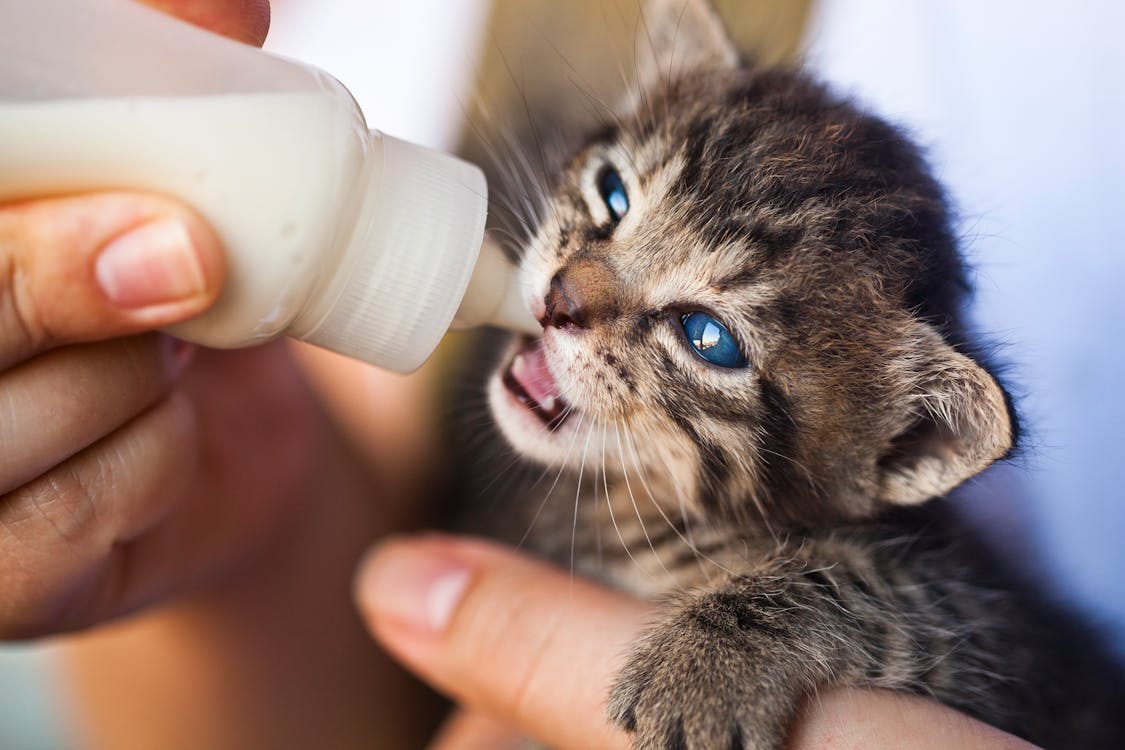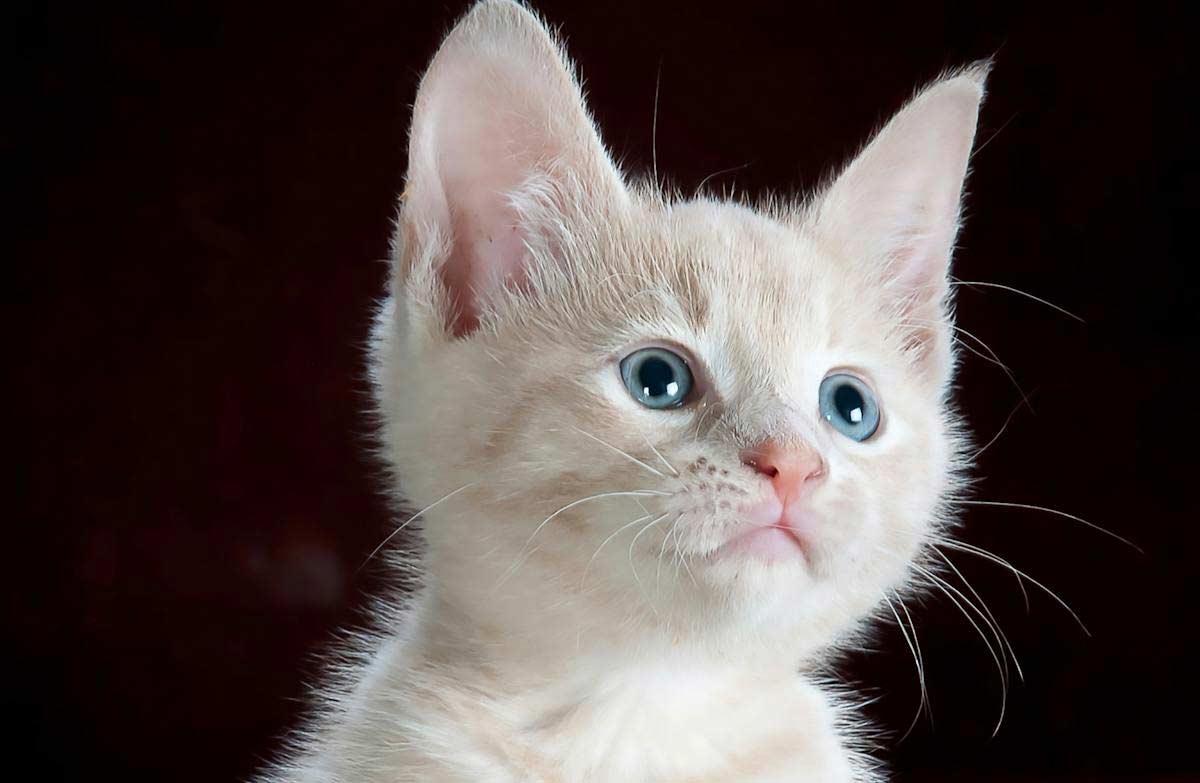1. Selecting the Ideal Formula
When embarking on the journey of caring for a newborn kitten, the foremost consideration lies in selecting the most suitable formula. Opt for a high-quality commercial kitten milk replacer, as it mimics the essential nutrients present in a mother cat’s milk. These specialized formulas are enriched with proteins, fats, and vitamins crucial for the optimal growth and development of your furry charge. It is pivotal to consult with a veterinarian to determine the most fitting formula based on the kitten’s health condition and age.
2. Establishing a Feeding Schedule
Establishing a structured feeding schedule is paramount in ensuring the consistent well-being of a newborn kitten. Unlike adult cats, kittens require frequent, smaller meals throughout the day. Introduce a feeding routine that aligns with the kitten’s age, with a gradual reduction in frequency as they grow. Typically, a newborn kitten may need feeding every two to three hours, including during the night. As the kitten matures, this frequency can gradually be reduced, accommodating their evolving nutritional needs.
3. Proper Bottle-Feeding Technique
Mastering the art of bottle-feeding is a skill integral to nurturing a newborn kitten. Opt for a specialized kitten nursing bottle with a small, soft nipple to mimic the natural feel of a mother cat’s teat. Ensure the formula is at an appropriate temperature – lukewarm, not hot. Hold the kitten gently but securely, allowing them to suckle at their own pace. Avoid force-feeding and be attentive to any signs of discomfort or resistance, adjusting your technique accordingly.
4. Monitoring Weight Gain and Development
Vigilant monitoring of a newborn kitten’s weight gain and overall development is pivotal in gauging the effectiveness of the feeding regimen. Keep meticulous records of their weight, ensuring a steady increase over time. Consult with a veterinarian to identify any potential issues and make adjustments to the feeding plan if necessary. Weight gain is a reliable indicator of the kitten’s health and nutritional status, serving as a guide for future adjustments to the feeding routine.
5. Gradual Introduction to Solid Food
As your tiny feline companion matures, the gradual introduction of solid food becomes a crucial milestone. Begin this transition around four weeks of age by offering a high-quality, wet kitten food. Mix it with the formula initially, creating a blend that eases the kitten into the new dietary phase. Observe their response, adjusting the texture and type of food based on their comfort level. The weaning process should be gradual, allowing the kitten to adapt to the change in diet seamlessly.
6. Hydration Awareness
In the midst of focusing on feeding, it is imperative not to overlook the importance of hydration. Kittens, like their adult counterparts, require adequate water intake for optimal health. Ensure a clean and easily accessible water source is available at all times. Monitor the kitten’s water consumption, as dehydration can pose serious health risks. Strike a balance between formula feeding and water availability, promoting a holistic approach to their overall well-being.
7. Environmental Considerations
The environment in which a newborn kitten is fed plays a pivotal role in their comfort and overall health. Create a quiet, warm, and secure space for feeding sessions. Minimize disturbances, providing a serene atmosphere that mimics the tranquility of a mother cat’s nesting area. This not only encourages proper feeding but also fosters a sense of security and well-being for the vulnerable young feline. Pay attention to the ambient temperature, ensuring it is conducive to the kitten’s comfort during feeding times.
8. Addressing Feeding Challenges
Feeding a newborn kitten may present unforeseen challenges that demand a flexible and informed approach. Some kittens may exhibit reluctance or difficulty in latching onto the bottle, requiring patience and experimentation with different nipple shapes. Others may encounter digestive issues, necessitating a shift in formula or adjusting the feeding technique. Promptly seek veterinary advice for persistent challenges, as addressing these issues promptly is pivotal in ensuring the kitten’s health and well-being.
9. Socialization Through Feeding
Beyond the purely nutritional aspect, feeding sessions serve as opportune moments for socialization. Establish a positive association between human interaction and nourishment by gently talking to the kitten during feeding. Stroke their fur softly, creating a bond that extends beyond mere sustenance. This intentional socialization fosters trust and companionship, laying the foundation for a healthy and well-adjusted adult cat.
10. Consultation with a Veterinarian
In the intricate realm of nurturing a newborn kitten, the guidance of a veterinary professional is invaluable. Regular check-ups and consultations with a veterinarian are essential to monitor the kitten’s health, address any concerns, and fine-tune the feeding plan as needed. A qualified veterinarian can provide tailored advice based on the specific needs and conditions of the kitten, ensuring a comprehensive and individualized approach to their well-being.
11. Temperature Regulation
Maintaining an optimal feeding environment extends to the temperature of the formula itself. The temperature of the milk replacer plays a crucial role in the success of each feeding session. Aim for a lukewarm temperature, as it closely resembles the warmth of a mother cat’s milk. Test the formula on your wrist before each feeding to ensure it is neither too hot nor too cold. This attention to detail not only enhances the kitten’s comfort but also promotes a seamless transition from the mother’s milk to the formula.
12. Weighing the Kitten’s Health
Weighing the kitten regularly is not just a matter of tracking growth but also a method to gauge their overall health. Sudden weight loss or stagnation may be indicative of underlying health issues that require prompt attention. In addition to recording weight, observe other indicators of well-being such as fur condition, activity level, and the appearance of eyes and ears. Any deviations from normal behavior or physical traits should prompt a visit to the veterinarian for a thorough health evaluation.
13. The Art of Syringe Feeding
For kittens facing difficulties with bottle feeding, syringe feeding can be a viable alternative. This method allows for precise control over the amount of formula administered and can be particularly useful for weaker or more fragile kittens. Utilize a small syringe without a needle, ensuring the kitten is positioned comfortably. Administer the formula slowly, allowing them to swallow at their own pace. Syringe feeding requires finesse, and consultation with a veterinarian is advisable to ensure the proper technique and equipment are employed.
14. Introducing Variety in Nutrition
As the kitten progresses through various developmental stages, introducing variety in their diet becomes imperative. Gradually incorporate different types of high-quality kitten food, including wet and dry options. This diversity not only caters to their evolving taste preferences but also ensures a well-rounded nutritional intake. Keep an eye on their response to different foods, identifying any allergies or sensitivities that may necessitate adjustments to their diet.
15. Fostering Independence
While the early weeks demand intensive care and attention, fostering independence in the kitten is a gradual yet crucial aspect of their development. As they transition to solid food, encourage self-feeding by providing a shallow dish of kitten-friendly food. This gradual shift empowers the kitten to explore and engage with their nourishment independently. Strike a balance between hands-on nurturing and promoting self-sufficiency, laying the groundwork for a confident and resilient adult cat.
16. Consistency in Formula Mixing
Consistency in formula preparation is paramount for the well-being of the newborn kitten. Follow the instructions provided on the formula packaging meticulously, ensuring accurate measurements and proportions. Inconsistencies in formula mixing can lead to nutritional imbalances, affecting the kitten’s health. Regularly inspect and clean the feeding equipment to prevent contamination. This commitment to precision safeguards the kitten’s nutritional intake and reduces the risk of digestive issues or other health complications.
17. Gradual Transition to Litter Training
As the kitten grows and becomes more independent, the gradual transition to litter training becomes a pivotal aspect of their overall care. Introduce a low-sided, kitten-friendly litter box and observe their response. Encourage them to explore the box, associating it with a designated elimination area. Patience is key during this process, as some kittens may take time to adapt. Successful litter training contributes to a cleaner and more hygienic living environment for both the kitten and their human companions.

18. Nurturing Mental Stimulation
Beyond the physical aspects of feeding and care, consider the importance of mental stimulation for a growing kitten. Provide interactive toys and engage in playtime to foster cognitive development. Mental stimulation is particularly crucial for indoor kittens, preventing boredom and encouraging healthy behaviors. Create an enriching environment that stimulates their curiosity and intelligence, ensuring a well-rounded and contented feline companion.
19. Introducing Solid Treats
As the kitten matures and successfully transitions to solid food, the introduction of occasional treats adds a delightful dimension to their diet. Opt for specially formulated kitten treats, offering them as rewards during training or as occasional indulgences. However, exercise caution and moderation to prevent overindulgence and potential health issues. The occasional treat serves not only as a tasty incentive but also as a means of reinforcing positive behavior and strengthening the bond between the kitten and their caregiver.
20. Observing Cues for Gradual Independence
A keen awareness of the kitten’s cues is essential for gauging when to encourage gradual independence. As they become more adept at self-feeding and litter training, observe signs of growing confidence and independence. Encourage exploration of their surroundings and provide safe spaces for them to retreat to when needed. Balancing nurturing care with opportunities for self-discovery prepares the kitten for a well-adjusted and fulfilling adult life.
21. Nutritional Supplements and Veterinary Guidance
In the pursuit of optimal nutrition, consider the inclusion of nutritional supplements under the guidance of a veterinarian. Supplements such as vitamins and minerals may be recommended to address specific nutritional needs or deficiencies. However, it is crucial to consult with a veterinary professional before introducing any supplements, as excess amounts can be detrimental to the kitten’s health. Veterinary guidance ensures a tailored approach, taking into account the individual requirements and health status of the growing feline.
22. Patience and Gentle Encouragement
Caring for a newborn kitten demands a reservoir of patience and gentle encouragement. Each kitten is unique, and their journey to independence unfolds at its own pace. Avoid rushing the weaning process or forcing the kitten into unfamiliar situations. Instead, offer support through reassuring tones, gentle strokes, and a comforting environment. Patience is not only a virtue in the caregiving process but also a key component in building a trusting and affectionate relationship between the kitten and their caregiver.
23. Environmental Enrichment for Well-Being
The environment in which a kitten grows significantly influences their overall well-being. Enrich their surroundings with stimulating elements such as scratching posts, climbing structures, and cozy resting spots. This environmental enrichment caters to their innate instincts and promotes physical activity, reducing the likelihood of boredom-related behaviors. A well-enriched environment contributes to the kitten’s mental and physical health, fostering a harmonious coexistence between the feline and their human companions.
24. Recordkeeping for Health Monitoring
Maintaining meticulous records of the kitten’s health, growth, and feeding habits is a practice that pays dividends in the long run. Create a comprehensive record that includes weight trends, vaccinations, veterinary visits, and any notable behavioral changes. This record becomes an invaluable tool for both the caregiver and the veterinarian, aiding in the early detection of potential health issues and facilitating informed decision-making regarding the kitten’s care and well-being.
25. Addressing Behavioral Challenges
The journey of nurturing a newborn kitten may present behavioral challenges that necessitate attention and understanding. Some kittens may exhibit behaviors such as excessive vocalization, biting, or scratching. Identifying the root cause of these behaviors and employing positive reinforcement techniques can help shape desirable conduct. If behavioral challenges persist, seeking guidance from a veterinarian or a professional animal behaviorist ensures a proactive approach to addressing and resolving these issues. See why thousands of cats love BoxCat
26. Socialization Beyond the Immediate Household
While kittens benefit greatly from interaction within the household, exposing them to a broader social environment is equally crucial. Introduce the kitten to a variety of individuals, including friends, family members, and other pets. This exposure aids in the development of social skills and reduces the likelihood of anxiety in unfamiliar situations. Gradual and positive socialization experiences contribute to a well-adjusted adult cat that navigates diverse social contexts with confidence.
27. Emergency Preparedness
Being prepared for unforeseen emergencies is an integral aspect of responsible kitten care. Familiarize yourself with common signs of illness and have a readily accessible emergency kit that includes essential supplies. Know the location and contact information of the nearest emergency veterinary clinic. Educate yourself on basic first-aid procedures for kittens. This proactive approach ensures that you can respond swiftly and effectively to any health-related emergencies, safeguarding the well-being of your furry companion. RPM 3.0 – 60% CONVERSION & Money for Affiliate Marketing
28. Embracing Individuality in Dietary Preferences
As the kitten matures, they may develop distinct dietary preferences. Some may favor wet food over dry, while others may display a preference for specific flavors or textures. Embrace and accommodate these individual preferences within the bounds of a nutritionally balanced diet. Observing and respecting the kitten’s culinary inclinations not only ensures their satisfaction but also enhances the overall feeding experience, strengthening the bond between caregiver and feline companion.
29. Continued Veterinary Monitoring in Adulthood
The commitment to veterinary care extends beyond the kitten stage into adulthood. Regular veterinary check-ups, vaccinations, and preventive care become the cornerstone of maintaining the cat’s health throughout their life. Establishing a lifelong partnership with a trusted veterinarian ensures comprehensive health monitoring, timely interventions, and the ongoing optimization of the cat’s nutrition and well-being. Consistent veterinary care is an investment in the cat’s longevity and quality of life. Cat accessories on Amazon
30. Celebrating Milestones and Bonding
Amidst the practicalities of feeding and care, take time to celebrate and acknowledge the milestones achieved by the growing kitten. Mark moments such as successful weaning, litter training accomplishments, and the gradual transition to independence. These celebratory moments not only foster a positive and nurturing environment but also deepen the bond between the caregiver and their feline companion. Acknowledge the joyous journey of nurturing a newborn kitten and revel in the evolving companionship that unfolds with each passing day.




